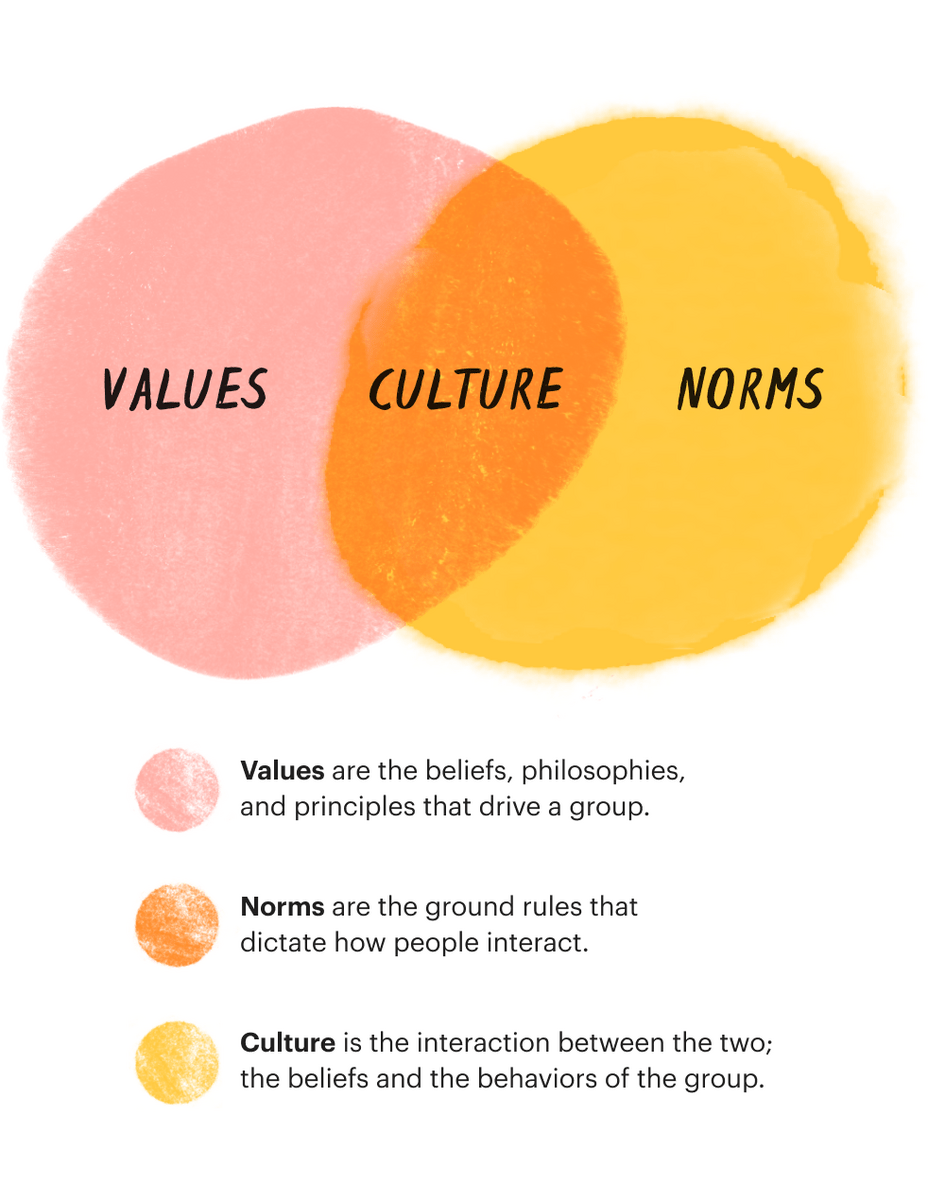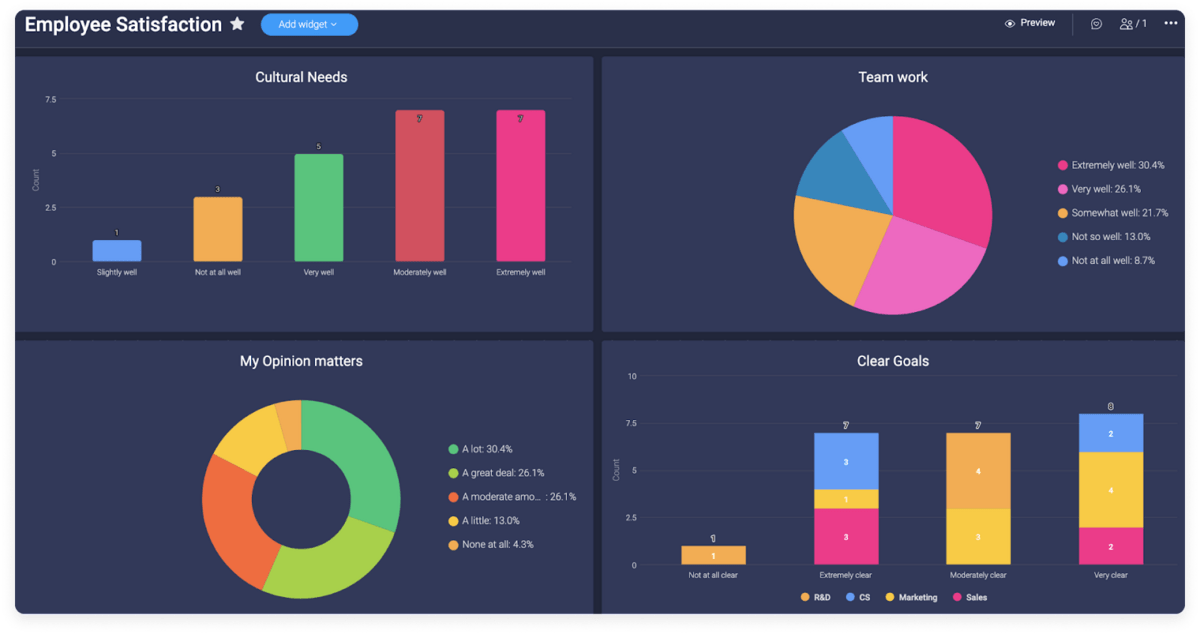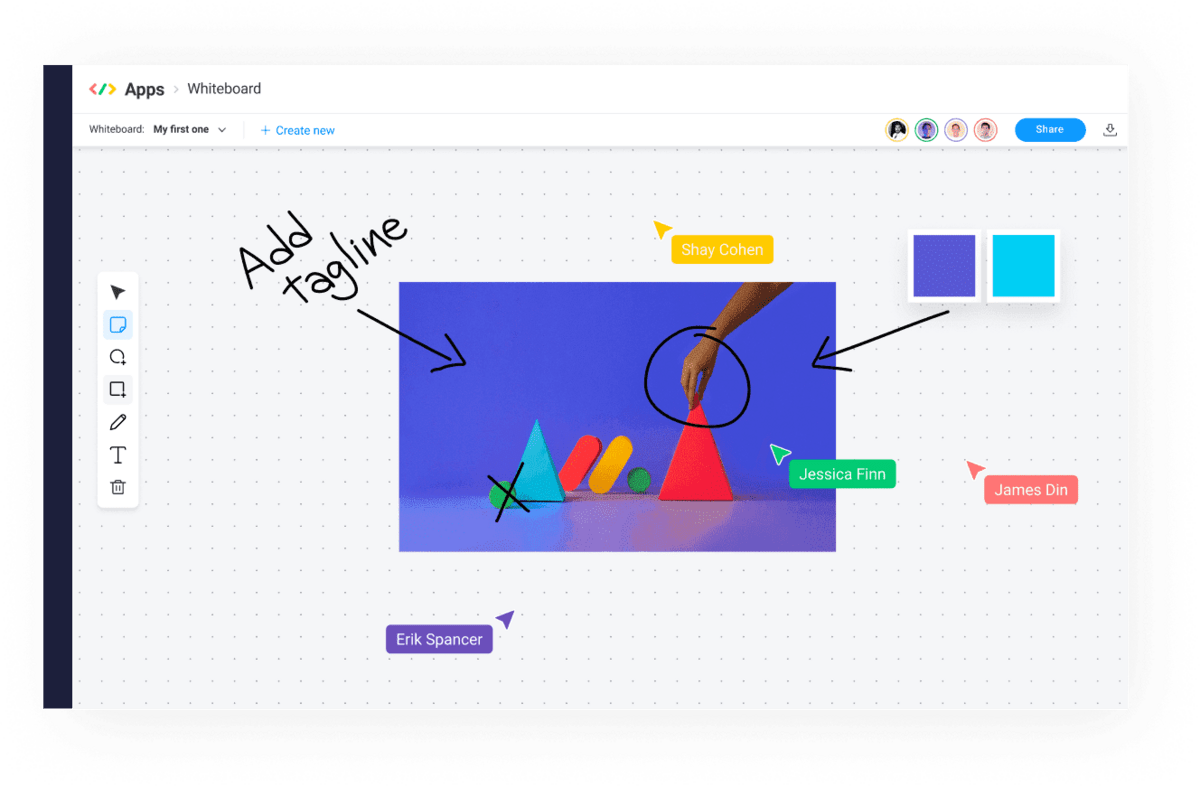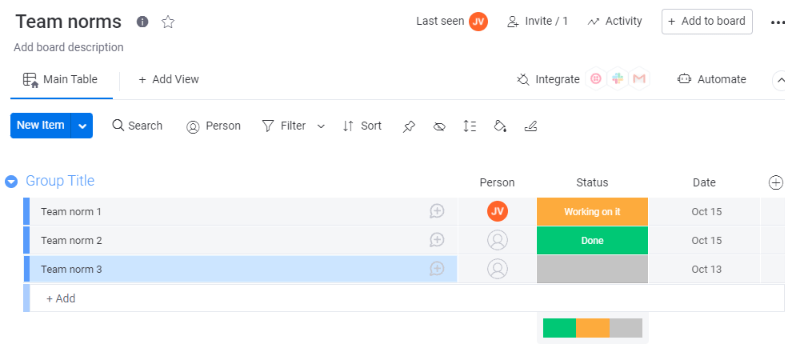Managing a team isn’t easy.
With so many personalities, backgrounds, skill sets, and opinions, it can be hard to know where to start.
Here’s where team norms come into play.
Team norms are guidelines for how the group should work together to achieve a common goal.
Team norms are a great way to establish clear expectations for your team, foster mutually beneficial relationships, and set up an environment where employees can thrive.
Today, we’ll show you everything you need to know about team norms, including what they are, why they matter, and how to implement them in your business.
Let’s start with a basic question:
What are team norms?
Team norms are group-based expectations and rules that team members have for one another.
They include the team’s values, how team members communicate with each other, and what they do when they’re together.
We can say that team norms are “the glue” that holds your team together and sets the overall work environment.

It’s important to set and maintain solid team norms, as they will affect how your employees work together and whether they’re successful.
For example, having team norms for incoming email etiquette will help your employees avoid being interrupted in the middle of a task. This could improve how your employees communicate and work together and enhance your company culture.
Another example could be that team members walk the halls and talk to each other every half hour. This way, they feel more connected and comfortable with each other, which could lead to higher productivity and better business results.
Team norms, or lack thereof, can make or break your business. The way that your team behaves can largely affect the results you get as a team.We’ll cover more examples of team norms a bit later, but first, let’s answer a major question.
What are the benefits of team norms?
Some of the main benefits of implementing team norms in your business may include:
- Mutual accountability: team norms help give your employees a sense of accountability, so they feel like their hard work is being recognized by their boss and other co-workers.
- Increased alignment: team norms allow teams to get on the same page with each other.
- A better culture: team norms help team members feel like they’re part of something bigger than themselves.
- Team dynamics and cohesion: your established norms will dictate how your team interacts and behaves.
- Team conflict management without escalation: norms help your team understand how to deal with conflict and solve problems much faster, without them getting out of hand.
9 examples of team norms for inspiration
Before we dive into the actual process of implementing team norms, let’s cover some examples of what team norms might look like in the real world.
Take a look through this list and use these examples as inspiration:
- Never stop learning: team members are committed to learning something new every month.
- Team members work on projects together: the team should have regular meetings where all team members participate and discuss the progress of both individual and group projects that have been completed or are underway.
- Punctuality is a must: team members are present and on time for all meetings, ready to work, and prepared with the necessary knowledge.
- Always be friendly: team members greet each other when they enter or exit a meeting or workspace.
- Be respectful: team members are respectful of one another by not interrupting others unless it’s absolutely necessary.
- There are no dumb questions: team members should ask for clarifications if they don’t understand something.
- Communication is a priority: at least one teammate needs to be active on Slack outside of working hours to manage stakeholder queries.
- Automate everything: teams never do any task manually if you can automate it.
- Respect the workspace: teammates can’t take personal calls during work hours.
These are only a few examples of team norms that you could implement in your own business.
Just keep in mind — team norms should be thoughtfully crafted around what you value as an organization. Start by making a list of the things that matter most about your company. This will help you come up with norms that fit your culture.
How to implement team norms in your organization
Now that you understand what team norms are and why they matter, the question is, how can you actually implement team norms in your organization?
Here’s a quick 6-step process:
1. Involve your team in the process
People are more likely to stick with the norms you set if they help you set them. That’s why team members should play an active role in the creation of team norms.
Start by openly discussing what’s working in your current company and team culture and what isn’t. You should also discuss how you want them to evolve in the future.
Remember that team members want to be heard, so it’s important that you give them an opportunity to contribute.
At this stage, a solid Work OS can help you run the process smoothly and with fewer headaches. For example, with monday.com, you can invite your entire team to brainstorm and collaborate on the same platform.

This is especially relevant for remote and hybrid teams.
By centralizing your communication into a single place, you can remove silos between departments and make sure everyone’s on the same page.
Besides, thanks to monday.com’s visual features, every meeting will be much more productive, as you’ll be able to communicate your ideas more clearly.
For instance, you can use dashboards and reports to showcase current problems based on real data.

You can also use monday.com’s whiteboard to sketch and brainstorm ideas and collaborate more effectively, regardless of your team’s location.

2. Identify already-existing norms
All teams have “unspoken” norms. That is, non-official rules that everyone knows exist but haven’t been properly documented.
For example, when a team member is speaking, everyone else in the room is expected to stop and listen. Or when someone says “good morning,” the typical response is to say it back.
These norms are present, but they haven’t been formally established.
With your team, conduct a team assessment to identify team norms that are already present. This will give you a good starting point for team norm creation.
3. Identify team norms that should be implemented
Now that you’ve identified existing team norms, it’s time to develop new ones.
You can create team norms based on an assessment or observation of behaviors or simply by brainstorming ideas.
Your team can also give feedback on which norms they like, which ones need improvement, and what new norms they would like to add.
For instance, if your team is working remotely, you should include norms about communication, timeliness of response, and how to handle disagreements.
If your team is working together in an open space, you could create norms about appropriate noise levels and how to handle interruptions.
The point is that group norms set a standard for behavior and should be based on your specific needs.
Again, a solid Work OS can ease the process.
With monday.com, for example, you could create a board called “Team norms brainstorming.”

You could then invite any relevant team members to the board and ask them to add norm ideas. Each new item could be a team norm. This would help you not only organize and categorize suggested norms but also store them for future discussion.
And this is just a small example of what the right Work OS can do for your team.
4. Build a culture of accountability
A great way to keep your team accountable is to create a system of rewards. If your team can see the benefits of staying accountable, they’re more likely to follow your norms.
Team-based rewards are a great motivator for your employees.
For instance, you could encourage accountability by implementing a program where people can win gift cards for upholding a certain number of norms.
Any solid Work OS can help you track your organizational behavior and oversee compliance more effectively. This way, implementing a reward system becomes feasible for any organization.
For example, with monday.com’s dashboards, you can visualize things like:
- Tasks completion
- Punctuality
- Engagement
- Project delays
And many more.

The best part?
You can sort this information by specific group members. This will help you understand who’s staying accountable and who isn’t.
5. Give the team time to adjust
Team norms are something that your team will develop over time. Give your team time to adjust to the changes and provide feedback in case any of the current norms need improvement.
6. Adopt the right team management platform
At the end of the day, choosing the right platform can really make or break your team norms.
The right Work OS can help your team report on their own behavior, what they have noticed about the team behavior, or how they are personally holding one another accountable.
A solid platform can also help you measure productivity and performance to determine the effectiveness of your new group norms.
You can also identify strengths and weaknesses within your team so that you can provide individualized feedback.
For instance, with monday.com, you get access to powerful team management features that’ll help you keep your team accountable, monitor compliance, and collaborate better.
Some of these features include:
- Task management: assign tasks to specific team members and oversee completion.
- Automations: automate up to 250,000 human actions through “if this, then that” recipes.
- Team management: centralize your workspace and manage your entire team under one roof.
- Communication: communicate with your team in context and ensure nothing slips through the cracks.
- Visualizations: visualize your team’s performance through multiple perspectives and angles.
- Reporting: get access to powerful reporting dashboards to oversee your most important metrics and KPIs.
To get a more complete understanding of everything monday.com brings to the table, we suggest you watch this short video overview:
Team norms are the key to effective team collaboration
Team norms are a set of expectations, guidelines, and rules that direct team interactions.
When implemented correctly, team norms can help you create an environment where everyone is on the same page.
The best way to start is by adopting the right platform to manage and oversee your team. This way, you’re able to monitor compliance and improve overall collaboration among teammates.
To see for yourself, why don’t you try out our advanced project management template? It’s fully customizable and can help you start right away.

